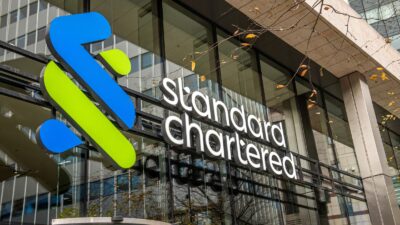The Aviva (LSE: AV) share price has lost 18% of its value since its 9 March high. To me, the stock at this level offers the opportunity for major share price gains over time.
Perhaps even more significantly, I think it offers the prospect of very high passive income into the future.
Share price potential
I expect the shares to bounce back because much of the fall had nothing to do with the company.
Instead, it came from fears of a new financial crisis arising from the failures of Silicon Valley Bank and Credit Suisse in March.
However, tough new rules to strengthen UK financial firms’ balance sheets came in after the Great Financial Crisis.
And Aviva’s Solvency II shareholder cover ratio was 212% at the end of 2022. This compares to just the 100% that meets the statutory requirements for UK insurance companies.
The rest of the drop was more understandable at the time. It reflected fears over the possible effects that ongoing high inflation and interest rates would have on the business.
This is certainly a risk for the shares, as such an economic environment can lead to customers cancelling policies.
However, for now, these fears remain unrealised, as seen in the excellent H1 results released on 16 August.
Going from strength to strength
CEO Amanda Blanc said the results show that: “Aviva is delivering consistently strong and profitable growth”.
I agree. Operating profit was up 8% over the same period last year and more than consensus analysts’ estimates – to £715m. Additionally positive is that the company expects full-year 2023 group operating profit to grow 5%-7%.
This is supported by ongoing rises in gross written premiums. In H1, they increased by 12%, to £5.3bn, compared to £4.7bn in H1 2022.
All these advances began when Blanc took over the top job in 2020. Immediately, she started to dispose of non-core assets, with eight having been sold since then, raising around £7.5bn. And in its Q1 update, it said its cost reduction target of £750m by 2024 is on track.
At the same time, she focused on increasing wealth fund flows from the UK, Ireland, and Canada general insurance businesses. In 2022, general insurance sales went up 8% and operating profit rose 35%, despite difficult financial market conditions.
Potential passive income bonanza
All of this led the company to increase its interim dividend by 8% compared to 2022 – to 11.1 pence per share. Last year, the interim payout was 10.3p and the final amount was 31p.
Currently, Aviva shares are yielding 8.07%, based on a share price of £3.84. However, if the 8% increase to the interim dividend was applied to the final dividend, the yield would be 8.7%.
Even if the payout was 8%, a £10,000 investment now would make me £800 per year. Over 10 years, I would have made £8,000 in passive income, on top of my £10,000 investment.
This return would not include further gains from any reinvestment of dividends or share price appreciation. It would also not account for any tax liabilities or share price falls.
I already have holdings in Aviva. However, given the heavily discounted share price and the ongoing passive income potential I may well buy more very soon.







